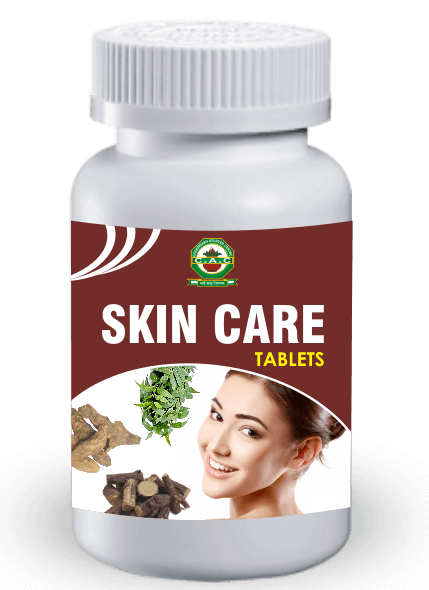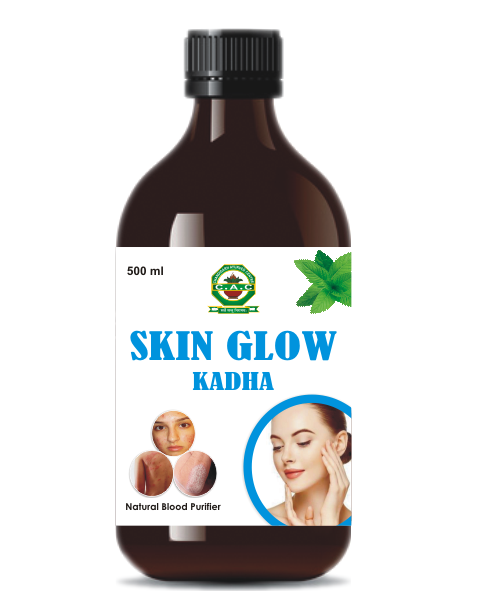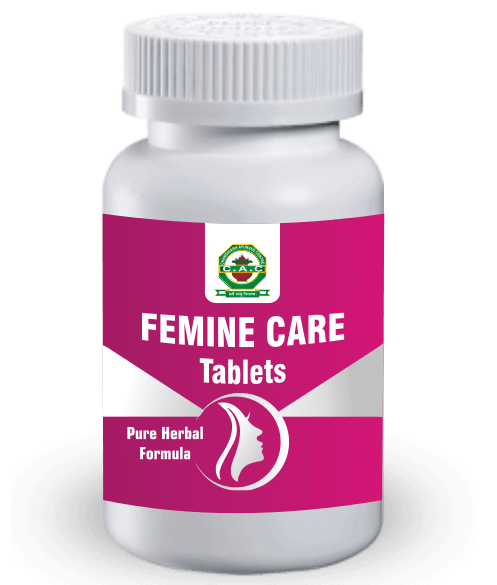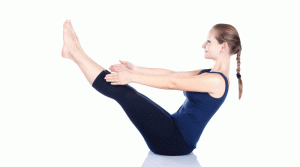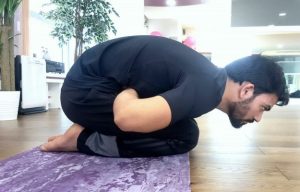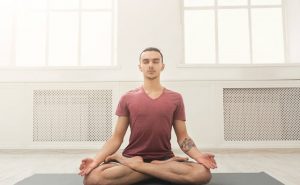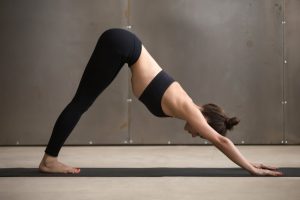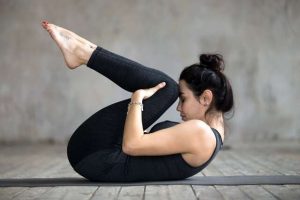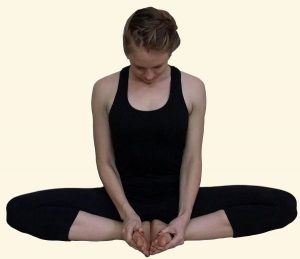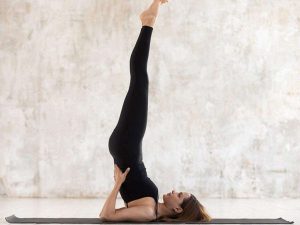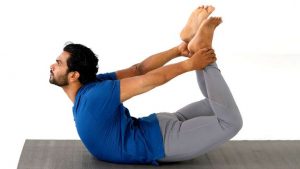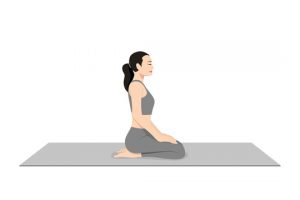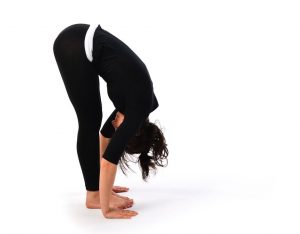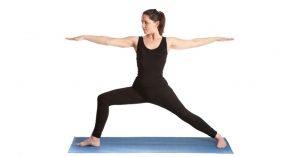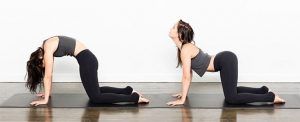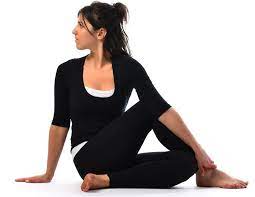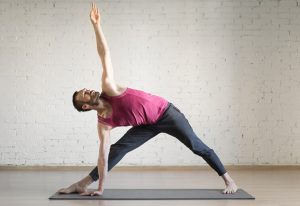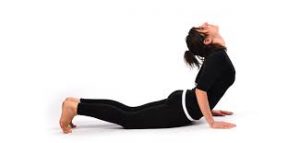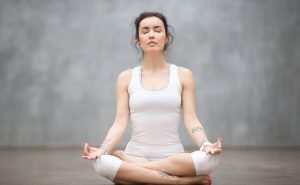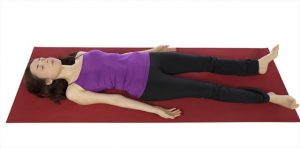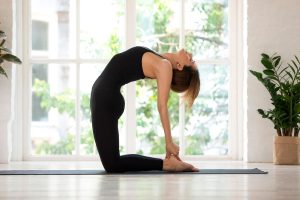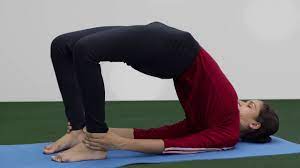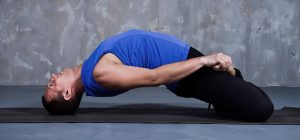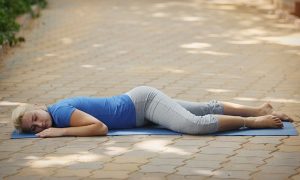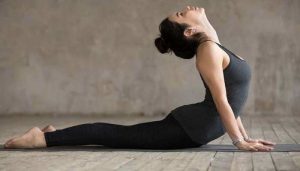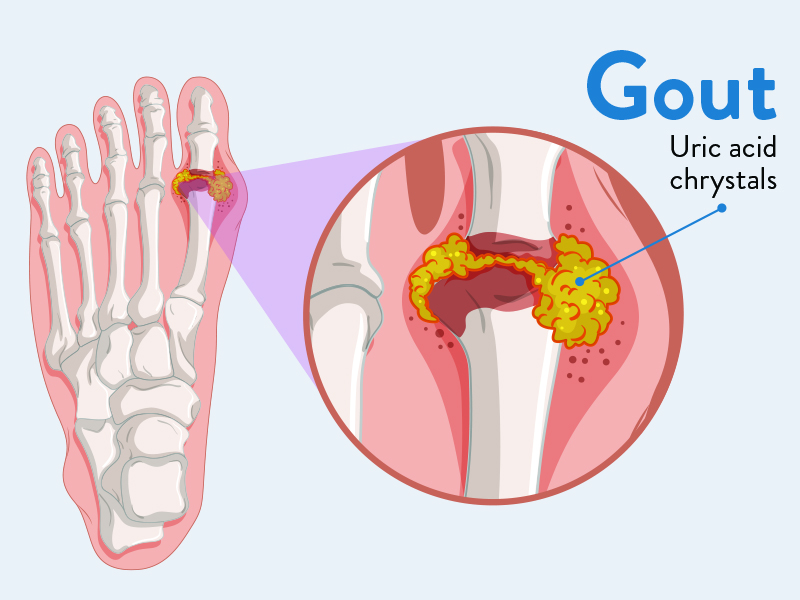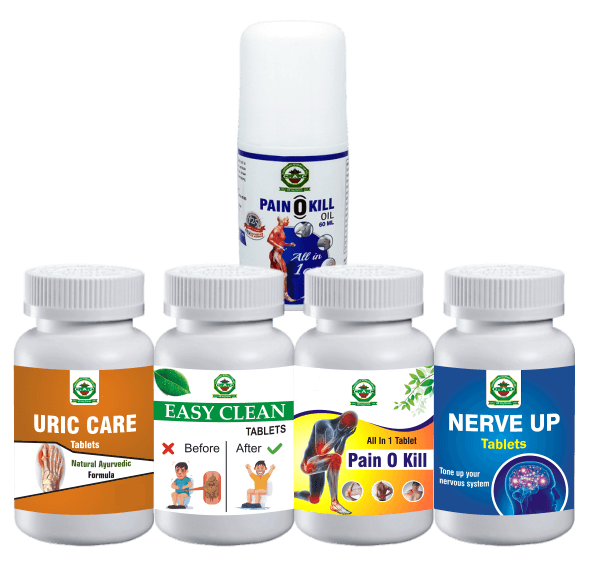Author Archives: Dr. Vaidya Karanvir Singh
CAC SKIN CARE TABLETS
- December 24, 2022
- Posted by Dr. Vaidya Karanvir Singh
- 0 Comment(s)
CAC Skin care tablet is an ayurvedic formulation consisting of different types of herbs such as haridra, neem, khadir, mulethi, gandhak, etc. All these herbs work on different types of skin disorders like hyperpigmentation, dark spots, ringworms, eczema and psoriasis. This tablet helps in purification of blood by removing toxins from the body. It increases blood circulation in the concerned areas and removes stagnant blood, thereby dissolving obstructions of blood. It removes sun tan and helps in preventing signs of ageing.
INGREDIENTS PRESENT IN CAC SKIN CARE TABLET
Following are the ingredients which are present in CAC Skin glow kadha:
- Haridra khand
- Panchnimba churna
- Panchtikta guggulu
- Patol patra
- Ajmoda
- Khadir chhal
- Chirayta
- Manjishtha
- Mulethi
- Chopchini
- Gandhak
PROPERTIES OF INGREDIENTS OF CAC SKIN CARE TABLETS
Each herb is packed with various types of nutrients which give them some specific properties.
KHADIR
Khadir has anti-inflammatory, antibacterial and antifungal properties. It helps in inhibiting the growth of bacteria and fungi on skin, thus helpful in various skin disorders like athlete’s foot, ringworm, eczema, etc. It reduces inflammation in skin and helps in healing wounds. It is an astringent also.
AJMODA
Ajmoda is commonly known as celery. It has anti-inflammatory and antibacterial properties. It reduces swelling and inflammation in skin. It is very beneficial for acne outbreaks and eczema.
MANJISHTHA
Manjishtha is considered to be one of the best drugs for skin care in Ayurveda. It contains glycosides which help in lightening dark spots and complexion. It helps in purification of blood and gives natural glow to the skin. It is antibacterial, anti-inflammatory and antioxidant in nature. It is very helpful in skin diseases like eczema, psoriasis, skin infections, etc.
HALDI
Turmeric contains an active ingredient called curcumin. Curcumin is a great antioxidant and anti-inflammatory in nature. It destroys free radicals and prevents skin damage. It is very beneficial in skin disorders like eczema, fungal infection, etc. It helps in lightening of skin complexion, dark spots and blemishes. It makes the skin healthy.
MULETHI
Mulethi helps in preventing sun damage, removes dark spots and helps in brightening skin. It fights fine lines and wrinkles. It helps in fading of scars and thus treats hyperpigmentation. It is recommended in several types of skin diseases also.
GANDHAK
Gandhak is a mineral which works wonders in skin disorders. It removes toxins from the body and helps in purification of blood. It removes impurities, unclogs pores and clears dirt. It has skin-soothing properties and prevents occurrence of acne and pimples. It is given in skin problems like psoriasis, skin infections, ringworms, etc.
WHAT ARE THE BENEFITS OF CAC SKIN CARE TABLETS?
CAC Skin care tablets are given in the following health conditions:
- Dryness of skin
- Intense itching
- Skin irritation
- Blemishes
- Burning sensation of skin
- Acne and pimples
- Allergic skin conditions
- Leucoderma
- Eczema
- Psoriasis
MEDICATIONS OF SKIN DISEASES IN ALLOPATHY AND THEIR SIDE-EFFECTS
The drugs which are used for skin diseases in allopathy are:
FLUCONAZOLE
Fluconazole is an anti-fungal medicine. It inhibits the growth of fungi in skin and thus good for various fungal infections like ringworm, jock itch, scalp infection, etc.
Side effects:
- Hives
- Itching
- Skin rashes
- Tightness in chest
- Increased heart rate
ERYTHROMYCIN
Erythromycin is an antibiotic and is given orally. It helps in destroying bacteria and prevents further growth of it. It is recommended in several types of skin infections.
Side effects:
- Nausea
- Diarrhea
- Pain in abdomen
- Loss of appetite
- Indigestion
- Bloating
CORTICOSTEROIDS
Corticsteroids such as prednisolone are given for reducing inflammation, swelling, redness and itching. It helps in controlling progression of a disease and recommended for skin conditions like hives, eczema, skin allergy.
Side effects:
- Gain in body weight
- Confusion
- Mood swings
- High blood pressure
- Swelling
- Diarrhea
BENZOYL PEROXIDE
It is an over-the-counter medication for topical use. It has bactericidal properties. It is a mild sebostatic and keratolytic in natre also. It is used for the treatment of acne vulgaris, folliculitis, pressure ulcers, etc.
Side effects:
- Hives
- Itching
- Increased sensitivity to sunlight
- Skin discoloration
- Swelling of face, eyes, lips
CAC SKIN GLOW KADHA
- December 24, 2022
- Posted by Dr. Vaidya Karanvir Singh
- 0 Comment(s)
CAC Skin glow kadha is a herbal decoction of various types of natural ingredients which helps in purification of blood and removing excess toxins from the body. The ingredients which are present in kadha are dalchini, giloy, tulsi, haldi, etc. They contain anti-oxidants and prevent cellular damage, thereby prevent ageing of skin. They have antibacterial and antifungal properties. It works good for acne and blemishes. It also helps in improving complexion of skin and makes skin healthy and naturally glowing.
WHAT ARE THE INGREDIENTS OF CAC SKIN GLOW KADHA?
Following are the ingredients of CAC Skin glow kadha:
- Giloy –Tinospora cordifolia
- Dalchini – Cinnamonum verum
- Bahera – Terminalia bellirica
- Tulsi – Ocimum sanctum
- Chirayta –Swertia chirayta
- Haldi – Curcuma longa
WHAT ARE THE PROPERTIES OF DIFFERENT INGREDIENTS OF SKIN GLOW KADHA?
Every herb is loaded with various types of nutrients, thus having different properties.
HALDI
Curcumin is an active ingredient of turmeric. It has both anti-inflammatory and antioxidant properties. Free radicals cause most of the damage to the skin and are thus responsible for premature aging. Turmeric prevents oxidative damage to the skin, helps in lightening of skin and reduces dark spots. It makes the skin glow naturally. It also helps in dealing with skin conditions like eczema and psoriasis.
GILOY
Giloy is considered to have raktashodhak properties, thus removes toxins from the blood. It is very helpful in skin allergies like dark circles, itching, acne and eczema. It fights germs and is antibacterial. It has antioxidant properties and thus fights free radicals. It helps in combating signs of premature ageing and gives a flawless look to the skin.
BAHERA
Bahera has antibacterial properties and is astringent in nature. It is rejuvenating in nature and makes the skin look supple. It helps in controlling acne breakouts and removes acne scars. It is also good for dandruff and good hair growth.
DALCHINI
Cinnamon as an essential oil is used in many of the cosmetic products like creams, lip balms, scrubs and perfumes. It is having anti-inflammatory, antioxidant and antimicrobial properties. It fights acne, fine lines and wrinkles. It also helps in skin lightening and makes skin look healthier.
TULSI
Tulsi is known as holy basil. It helps in reducing inflammation and swelling. It fights bacteria and thus cures acne. It reduces pigmentation of skin, dark spots and dark circles. It makes the skin healthy and prevents premature aging.
CHIRAYTA
Chirayta is very helpful in managing skin problems such as acne. It helps in reducing inflammation and redness. It is antibacterial in nature. When the paste of chirayta along with honey is applied on face, then it cures acne.
WHAT ARE THE USES OF CAC SKIN GLOW KADHA?
Following are the health conditions in which CAC Skin glow kadha:
- Pimples
- Dark circles
- Blemishes
- Rashes on skin
- Hyperpigmentation
- Fine lines
- Wrinkles
- Dry skin
- Skin rashes
- Itching
- Skin irritation
- Improves skin complexion
- Eczema
- Rosacea
- Psoriasis
- Carbuncles
- Melasma
- Warts
- Dermatitis
- Dull skin
MEDICATIONS FOR SKIN CARE IN ALLOPATHY ALONG WITH THEIR SIDE EFFECTS
Some of the drugs which are used in allopathy for skin care are:
BENZOYL PEROXIDE
It is an over-the-counter medication for topical use. It has bactericidal properties. It is a mild sebostatic and keratolytic in natre also. It is used for the treatment of acne vulgaris, folliculitis, pressure ulcers, etc.
Side effects:
- Hives
- Itching
- Increased sensitivity to sunlight
- Skin discoloration
- Swelling of face, eyes, lips
COAL TAR
It belongs to a group of keratolytics. It sheds dead skin cells from the top layer and makes the growth of skin cells slow. It helps in treating itching, scaling and flaking. It is given for the treatment of skin conditions like psoriasis or seborrheic dermatitis.
Side effects:
- Staining of skin
- Skin irritation
- Rashes
- Dizziness
- Difficulty in breathing
CORTICOSTEROIDS
Corticosteroids are given for reducing inflammation, swelling, redness and itching on skin. It is thus given for relief in conditions like hives, eczema, rosacaea and other allergic conditions. It is also given for various other diseases.
Side effects:
- High blood pressure
- Swelling in lower legs
- Upsetting of stomach
- Weight gain
- Mood swings
- Confusion
RETINOIDS
Retinoids are given for increasing collagen production in skin. It leads to more production of new blood vessels in skin and thus skin color is improved. It also helps in fading age spots and smoothens skin.
Side effects:
- Skin irritation
- Dryness
- Sensitivity to sunlight
- Flaking
- Swelling and redness
CAC FEMINE CARE TABLETS
- December 24, 2022
- Posted by Dr. Vaidya Karanvir Singh
- 0 Comment(s)
CAC Femine care tablets are best suited for female reproductive health issues such as white discharge, irregular periods, polycystic ovarian disease, conception, etc. The ingredients present in it are different types of herbs which help in strengthening of the reproductive system of females. The herbs have antioxidant, anti-inflammatory and immune-modulator properties. They help in proper supply of blood to the uterus and ovaries and helps in maintainance of hormonal balance. It is a total herbal approach to female health issues.
WHAT ARE THE INGREDIENTS OF CAC FEMINE CARE TABLETS?
Following are the contents of CAC Femine care tablets:
- Ghritkumari (Aloe barbadensis)
- Sonth (Zingiber officinale)
- Muramakki (Commiphora myrrha)
- Hara kasis (Ferrous sulphate)
WHAT ARE THE PROPERTIES OF INGREDIENTS?
Every ingredient is a different type of herb having different properties and thus different mode of action.
GHRITKUMARI
Ghritkumari is the well-known aloe vera plant. It is known for its wide-ranging medicinal and general health properties. It has widely used in skin care and hair regime. It has good antioxidant properties and anti-inflammatory properties. It helps in increasing levels of good bacteria in gut and removes harmful parasites from the body. It has laxative properties and thus prevents constipation.
MURAMUKKI
Its scientific name is Commiphora myrrha. It is a versatile gum resin. It is having digestive properties, helps in strengthening immunity and balances vata and kapha doshas. It removes impurities from blood and lowers blood sugar level. It is very helpful in treating menorrhagia, acne, white discharge. It is taken orally for treatment of leucorrhea and heavy menstrual flow.
SONTH
Sonth is dry ginger. Its scientific name is Zingiber officinale. It is a good appetizer, increases digestion power, balances hormones and prevents constipation. Mostly it is used for treating cough, sore throat and asthma. But it is a good aphrodisiac also.
HARA KASIS
Hara kasis is ferrous sulphate which is green vitriol. It is a mineral based medicine which is high in iron and thus very good for treating anemia and menstrual disorders. It aids in good menstrual flow and is very good for treatment of primary and secondary amenorrhea. It also helps in curing infrequent and scanty menstruation.
WHAT ARE THE USES OF CAC FEMINE CARE TABLETS?
CAC Femine care tablets are useful in the following health conditions:
- Bulky uterus
- Endometriosis
- Polycystic ovarian disease
- Amenorrhea
- Dysmenorrhea
- Menorrhagia
- Uterine fibroids
- Hormonal imbalance
- Excessive growth of facial hair
- Body weakness
- Anemia
- General female health
WHAT ARE THE MEDICATIONS WHICH ARE GIVEN IN ALLOPATHY FOR FEMALE HEALTH ALONG WITH THEIR SIDE EFFECTS?
Here are some of the drugs which are used commonly for treating various health conditions:
TRANEXAMIC ACID
It is used for controlling heavy loss of blood during periods. It prevents enzymes in body from breaking down clots of blood. Thus, it is used to prevent bleeding.
Side effects of tranexamic acid:
- Confusion
- Vision problems
- Headache
- Numbness
- Weakness
- Drowsiness
- Diarrhea
ETHINYL ESTRADIOL
Ethinyl estradiol is a female hormone which is used as an oral contraceptive. It prevents release of egg from an ovary, causes changes in cervical mucus and prevents implantation. It makes harder for sperm to fertilise the egg. It is also given for treatment of acne, premenstrual syndrome, anxiety, depression, tenderness in breast, weight gain and body aches.
Side effects of ethinyl estradiol:
- Nausea
- Numbness
- Weakness
- Vaginal bleeding
- Breast cancer
- Uncontrolled blood pressure
- Kidney disease
LYSTEDA
Lysteda is an artificially prepared amino acid called lysine. It is very useful for treating heavy flow of blood during menstruation. Thus, it is given in cases of menorrhagia.
Side effects of lysteda:
- Numbness
- Body weakness
- Difficulty in breathing
- Migraine
- Swelling in legs
- Increased heart rate
- Lack of concentration
- Abdominal pain
- Confusion
FATTY LIVER – YOGA ASANAS
- December 23, 2022
- Posted by Dr. Vaidya Karanvir Singh
- 0 Comment(s)
Liver is one of the important organ of the body that helps in metabolism of proteins, carbohydrates and fats in body and helps in detoxification of blood. It is also responsible for the production of bile .
Due to today’s stressful and unhealthy lifestyle many complications of liver may arise. Yoga consist of simple and effective asans that helps the person to maintain overall health of body. Yoga poses exert pressure on liver thus strengthens it and improve overall liver functions .
WHAT IS FATTY LIVER ?
Small amount of fat is present in liver is normal but too much can become a health problem. It is also called as Hepatic steatosis.
When there is too much fat present in liver it can lead to liver inflammation which in turn cause liver damage and create scarring.
TYPES OF FATTY LIVER :
There are mainly two types of fatty liver disease :
- Alcoholic fatty liver disease (AFLD) : It is caused by excessive consumption of alcohol.
- Non-alcoholic fatty liver disease (NAFLD) : It occur in people with history of high BP, liver cirrhosis , diabetes etc but they do not drink alcohol or have history of alcohol abuse.
WHAT ARE THE CAUSES OF FATTY LIVER ?
Some of the common causes of fatty liver are :
- Insulin resistance
- High level of fat, specially triglycerides in blood
- Obesity
- Type 2 diabetes
- Metabolic syndrome
- Certain medications like diltiazem , amiodarone etc
WHAT ARE THE RISK FATORS OF FATTY LIVER ?
- Old age
- Genetics
- Smoking
- History of infections like hepatitis C
- Pregnancy
- PCOS
WHAT ARE THE SYMPTOMS OF FATTY LIVER ?
Common symptoms of fatty liver are :
- Nausea
- Loss of appetite
- Yellowish whites of eyes and skin
- Edema in abdomen and legs
- Abdominal pain
- Mental confusion
- Fatigue
- Easy bruising
- Weight loss
AYURVEDIC APPROACH :
In ayuveda Fatty liver can be correlated with Yakrithodar roga . In it due to nidan sevan the kapha and pitta get vitiated . The vitiated kapha dosha entres yakrit the place of pitta and cause accumulation of fat or triglycerides in yakrit. Accumulation cause enlargement of yakrit and produce symptoms like agnimandya , panduroga , balaksheenta causing Yakrithodar roga.
YOGA ASANAS :
- NAUKASANA ( BOAT POSE) : It helps to strengthen abdominal muscles , reduce belly fat and improve digestion. It also helps to stimulate and strengthen the liver functions thus allowing removal of harmful toxins out of the body.
STEPS :
- Lie down straight on your back keeping legs stretched forward
- Put hands close to the waist
- Raise both legs and torso at same time in air along with hands that whole body weight lies on hips
- Hold the posture for 20-30 seconds
- Gradually return to the initial position.
PRECAUSTIONS :
- Spinal diseases
- Severe headache
- Asthma
- Migraine
- Pregnancy
- Heart conditions
- Menstrual cycle
- MANDUKASANA ( FROG POSE) : It helps to improve blood circulation and relives the pain. It also improve digestive system by encouraging digestive tract movement thus providing relieve from bloating, gas and cramps.
STEPS :
- Kneel down on mat and keep knees hip-width apart.
- Place both hands on umbilicus and take a deep breath
- Slowly exhale while slightly pressing in your stomach and start to bend forward.
- Touch the chest with the knees
- Hold the pose for 30 seconds and then slowly return to initial position.
PRECAUSTIONS :
- Peptic or duodenal ulcers
- Lower back injury
- Recent abdominal surgery
- Pregnancy
- Diarrhea
- Knee or ankle pain
- High blood pressure
- Hip pain
- PADAMASANA ( LOTUS POSE ) : It helps to overcome weakness of liver . It also helps to relax mind and reduce muscle tension. It aids in improvement of digestive system.
STEPS :
- sit down on mat with crossed legs keeping feet on thighs across from one another
- Keep the back straight
- Place hands on knees in mudra position keeping the head straight and spine erect
- Hold the posture while continuing taking long breaths in and out
- Gradually come out of the pose and relax .
PRECAUSTIONS :
- Ankle or knee injury
- Sciatica
- Sacral infection
- Spinal injury
- Calf injury
- ADHOMUKHA SVANASANA ( DOWNWARD FACING DOG POSE) : It increase the circulation of blood in the body . It also stimulates the digestive organs. It aids in production of bile in the liver.
STEPS :
- Stand on your legs hip width apart
- inhaling deeply start to bend down with palms touching the ground
- Both arms should be at shoulder-width apart
- Make an inverted V shape and head should be placed between the upper arms.
- While doing it ensure soles and heels touches the floor
- Hold the pose for 5-8 breaths and then slowly return to original posture.
PRECAUSTIONS :
- Ankle or wrist injury
- Spinal injury
- Knee or shoulder pain
- Migraine
- Vertigo
- High blood pressure
- Epilepsy
- PAWANMUKHTASANA(KNEE TO CHEST POSE ) :It is helpful to relieve flatulence and improve the digestion of the body. It helps to flex back and hip muscles. It strengthen the abdominal and hip muscles also.
STEPS :
- Lie down on your back and legs stretched forward with knees touching the ground.
- Inhale deeply while bringing both knees toward the chest. The spine should be straight.
- Reach both hands around the back of thighs to provide support .
- Stretch more by lifting the head and tucking your chin into the chest.
- Hold the pose for a minute and then slowly return to the initial position.
PRECAUSTIONS :
- Neck pain
- Piles
- Hernia
- Slipped disc
- Heart conditions
- High blood pressure
- Pregnancy
LEUCORRHEA – YOGA ASANAS
- December 23, 2022
- Posted by Dr. Vaidya Karanvir Singh
- 0 Comment(s)
INTRODUCTION
Leucorrhea is the whitish discharge from vagina. It is a very common problem in females, especially in present era due to unhealthy lifestyle and eating habits. There are glands which are present in vagina and cervix. They secrete fluid which helps in removing harmful bacteria and dead cells from the reproductive tract. Thus it helps in keeping the reproductive tract healthy. But when there is excessive discharge and changed consistency of the discharge, then it is called leucorrhea.
Normally, the color of vaginal discharge is between transparent to milky white. The amount of discharge differs during phases of a menstrual cycle. It often increases during the sexual arousal, lactation and ovulation. So when the discharge is not normal and there is associated symptoms like burning sensation and itching, then it requires medical attention.
WHAT ARE THE CAUSES OF LEUCORRHEA?
The reasons for the occurrence of vaginal discharge are:
- Not maintaining personal hygiene
- Infection in female reproductive tract
- Sexually transmitted infections
- Pelvic inflammatory disease
- Excessive vaginal douching
- Vaginal sprays
- Use of scented and harsh soaps
- Trichomoniasis
- Diabetes
- During pregnancy
- Stress
- Heavy weight-lifting
WHAT ARE THE SYMPTOMS WHICH ARISE WITH LEUCORRHEA?
Leucorrhea is associated with the following signs and symptoms:
- Vaginal itching
- Swelling of vulva (female external genitalia)
- Burning sensation in vagina
- Fishy odor from vagina
- Yellowish- white discharge
- Thick cheese like discharge from vagina
- Pain during urination
- Pain in pelvis
- Abdominal pain
- Pain during sexual intercourse
- Low grade fever
- Lower backache
- Vaginal swelling
- Constipation
- Indigestion
HOW LEUCORRHEA CAN BE PREVENTED?
Leucorrhea can be easily prevented by following some of the following steps:
- Personal hygiene
- Avoid genital sprays and usage of harsh soaps
- Avoid alcohol intake
- No to consumption of oily and junk foods
- Not indulging in excessive sexual activity
HOW YOGA CAN BE BENEFICIAL IN CURING LEUCORRHEA?
Leucorrhea is the result of an unhealthy lifestyle and bad eating habits. Females are undergoing a lot of stress now-a-days due to their household and office commitments. Yoga asanas can be beneficial in managing stress and leads to normal functioning of the body.
Some of the asanas which are recommended for treatment of leucorrhea are:
1. BHADRASANA
It is also known as Badhkonasana. Badh means restrained, kona means angle and asana means posture. How to do it:
- Sit with spine erect and legs spread straight out.
- Bend the knees and bring the feet towards the pelvis. The soles of the feet should be touching each other.
- Grab the feet tightly with the hands and make the heels as close to genitals as possible.
- Then, press the knees and thighs downwards towards the floor. Now flap both the legs up and down like the wings of a butterfly. One should start slow and then increase the speed gradually. Breathe normally.
- Fly as high as possible and as fast as a person can. Then slow down and stop.
- While breathing out, gently release the posture and straighten the legs in front and relax.
Contraindications:
- Knee injury
- Injury of the groin
- Lower back problem
2. SARVANGASANA
Sarvangasana is also known as shoulder stand. It is a yoga pose in which the whole body is balanced on the shoulders. Sarv means all, anga means a part of body and asana means body posture. It has an influence on the functioning of all the body parts. This asana is known as Queen of the asanas. It is very beneficial for maintaining physical and mental health.
How to do it:
- Lie on the back with hands on the side
- Then, with one movement, lift the legs, buttocks and back so that their weight comes on the shoulders. Support the back with both the hands.
- Keep the legs and spine straight with the help of elbows and hands to the back. The weight should be supported on shoulders and upper arms not on head and neck.
- Breathe deeply while maintaining the posture for 30-60 seconds.
- Then, lower the knees to forehead and bring your hands down to the floor. Without lifting the head, bring the spine down. Lower the legs on the floor and relax for a minimum of 60 seconds.
Contraindications:
- Pregnancy
- Menstruation
- Hypertension
- Glaucoma
- Slip disc
- Neck pain
- Spondylosis
3. DHANURASANA
Dhanu means bow and asana means body posture. In dhanurasana, the shape of the body is made like that of a bow. The pose should be performed 4-5 hour after meals. The best time is of early morning.
How to do it:
- Lie in the stomach with the feet apart.
- Then fold the knees and take your hands backwards and hold the ankles.
- Breathe in and lift the chest up from the ground. Pull the legs upwards and more towards the back.
- Keep the body posture stable and see forward. Pay attention to the breath.
- Maintain posture for 15-20 seconds and bring the legs and chest gently to the ground.
Contraindications:
- Neck injury
- Hernia
- Hypertension or hypotension
- Lower back pain
- Migraine
- Recent abdominal surgery
4. VAJRASANA
Vajra means diamond or thunderbolt and asana means body posture. So vajrasana is thunderbolt pose. It is also known as adamantine pose.
How to do it:
- Sit with the legs stretched straight in front.
- Fold both the legs and sit in a kneeling position. Hips are placed on the heels and toes are pointed behind. Big toes should touch each other.
- Head, neck and spine should be kept in straight line. Place the palms on thighs and face upwards.
- Now exhale and inhale. Beginners can hold the pose for 30 sec whereas experts can hold for a few minutes. After that, straighten your legs.
Contraindications:
- Slipped disc
- Trouble in foot, ankle and knees
5. BHUJANGASANA
Bhujanga means cobra and asana means body posture. Bhujangasana is the cobra or snake pose. It can be done easily at home while lying down on the stomach and then stretching. It gives a good stretch to the body and instantly relieves stress.
How to do it:
- Lie down in stomach with the toes flat and soles facing upwards.
- Rest the forehead on the ground, keep the legs closer with feet and heels touching each other.
- Now slowly lift the body while taking a deep breath in. The navel should be kept in ground level.
- Both the hands should have equal pressure while pulling on and off of the torso from the ground.
- Hold the pose for 4-5 breaths. Then, breathe out and bring the abdomen, chest and head gently on floor.
- Repeat it for 4-5 times.
Contraindications:
- Pregnancy
- Carpal tunnel syndrome
- Hernia
- Recent abdominal surgery
- Fracture of ribs or wrist joints
ARRHYTHMIA – YOGA ASANAS
- December 23, 2022
- Posted by Dr. Vaidya Karanvir Singh
- 0 Comment(s)
Heart is organ that work continuously without any break. It is vital organ responsible for circulation of blood in the body. Food habits , sedentary lifestyle and stress contributes in disturbance of normal functioning of heart thus increasing the risk of cardiovascular conditions.
Yoga helps to maintain a healthy heart . It manages the stress and relax mind and body which is in turn improve overall heart health.
WHAT IS ARRHYTHMIA ?
The irregularity of heartbeat is called Arrhythmia . In Arrhythmia some time heart beat faster than normal and some time heart beat slower than normal.
It happens when electrical signal coordinating heart beat are not working properly. Faulty signal cause heart to beat to slow or too fast. It may feel like racing heart and may be harmless but in some cases it can be life threatening .
TYPES OF ARRHYTHMIAS :
- Supraventricular arrhythmias :It begins in the upper chambers of heart or in atria
- Ventricular arrhythmias : It begins in the lower chambers of heart or in ventricles
- Brady arrhythmias :In it slow heat beat is caused by disease in hearts conduction system like SA nodes , HIS-purkinje network or AV node.
WHAT ARE THE CAUSES OF ARRHYTHMIA ?
- Wrong balance of electrolytes in blood
- Heart diseases
- Infection or fever
- Healing after heart surgery
- Heart injury
- Certain medications
- Strong emotions
- Stress
- Alcohol or Tobacco abuse
- Excessive caffeine intake
WHAT ARE THE SYMPTOMES OF ARRHYTHMIA ?
In some cases symptoms be un-noticeable . Some of the common symptoms are :
- Pounding in chest
- Palpitations
- Shortness of breath
- Dizziness
- Chest tightness or pain
- Fatigue
- Anxiety
- Sweating
- Blurred vision
- Low ejection fraction
WHAT ARE THE RISK FACTORS ?
Some of the risk factors are :
- Genetics : Family history of some type of heart disease increase the risk of arrhythmia
- Lifestyle : Having sedentary lifestyle or abuse of substances can also increase risk of arrhythmia
- Age : Old age persons are more prone to it
- Medical conditions : Person suffering from high BP , obesity, low blood sugar, sleep apnea may develop arrhythmia
AYURVEDIC APPROACH :
In ayurveda it can be correlated with hridroga . Due to nidan sevna three doshas get aggravated . The aggravated dosha contaminate the rase dhatu. Doshas along with rase dhatu enters the heart causing Hridroga.
- Imbalanced vata cause irregularity in heartbeat
- Imbalanced pitta increase the hearbeat
- Imbalanced kapha results in slow heart rate.
YOGA ASANAS :
1. UTTHITA HASTAPAD ASANA ( EXTENDED HANDS AND FEET POSE ) : It helps to distribute oxygen equally in entire body thus helps in regulation of blood circulation too. It also improve focus and stamina of body.
STEPS :
- Stand straight on mat with legs apart
- Slowly inhale while bringing both hands above the head
- Now exhale while bending your waist to touch your feet with hands
- Keep your knees straight and head should touch the knees
- Hold the posture for some seconds than slowly return to standing position.
PRECAUTIONS :
- Ankle injury
- Hip or knee injury
- Recent surgery
- Flat foot
- Hip issues
- Vertigo
- Hernia
2. VIRABHADR ASANA ( WARRIOR POSE) : It improves body balance and stamina of the body . It improves blood circulation of body thus helps to keep heart rate in check.
STEPS :
- Stand straight with feet 3-4 feet apart
- Slowly turn right foot out so that it at 90 degree angle and turn left foot by 15 degree
- Lift both arms sideways to shoulder height slowly with palms facing downward
- Exhale deeply while bending right knee and turn head to the right
- Stretch the arms more and hold the head high
- Hold the pose for some time while taking deep breaths
- Slowly breath in and lower the arms to release the pose
PRECAUTIONS :
- Severe neck pain
- High blood pressure
- Knee or shoulder pain
- Diarrhea
- Suffering from spinal ailments
- History of stroke
3. MARJARI ASANA ( CAT POSE) : It helps to normalize heart rate and become rhythmic and soft. It enhance the blood circulation in body. It is a relief asana.
STEPS :
- Come on your four on the mat with back straight
- Look ahead and inhale expanding the belly downward and raise chin tilting head back.
- Stretch like cat pointing tailbone up.
- Slowly exhale with pulling bell in toward the spine with chin resting on chest .
- Back should be round
- Repeat the above steps as many time as comfortable
- Then return to resting position.
PRECAUTIONS :
- Pregnancy
- Knee pain
- Back or neck pain
- Migraine
- Spondylitis
- High blood pressure
4. ARDHA MATSYENDER ASANA (SITTING HALF SPINAL TWIST POSE ) : It helps to built chest muscles and expanding lung region thus improving lung capacity. it also helps to regulate blood pressure.
STEPS :
- Sit on ground while stretching the legs outward.
- Slowly and gradually bring right foot to outside of left hip with knee pointing forward
- Then move left foot outside to right thigh while bringing left hand to ground behind you.
- Wrap right arm around leg thigh
- Slowly turn upper body to right as far as comfortable
- Hold the pose for few minutes , then gently return to initial position
- Repeat the procedure to other side.
PRECAUTIONS :
- Peptic ulcer
- Spinal issues
- Hernia
- Pregnancy
- Menstrual cycle
- Neck pain
5.TRIKONASANA ( TRIANGLE POSE ) : It helps to expand chest and also improves stamina.
STEPS :
- Stand straight and keep feet 3 to 4 feet apart .Then turn one foot outward.
- Slowly raise both arms parallel to ground than bend at hips and lower on arm to leg and raise other toward the sky.
- Exhale and bend down while placing arm on your knee or ankle. Alignment of hips is to be straight.
- Hold the posture for few deep breaths and then slowly exhale and return to standing position .
- Repeats same on opposite side .
- Repeat the above steps as many times as comfortable .
PRECAUTIONS :
- Headache
- Insomnia
- Low blood pressure
- Diarrhea
- Pregnancy
- Lower back pain
BRONCHITIS – YOGA ASANAS
- December 23, 2022
- Posted by Dr. Vaidya Karanvir Singh
- 0 Comment(s)
WHAT IS BRONCHITIS?
Bronchitis is a medical condition in which there occurs inflammation of the airways of lungs. Trachea and bronchi are the air tubules which carry air to and from the lungs. They get irritated and swell up due to any reason. The bronchi become thick and there is excessive production of mucus leading to cough. Cough is the main symptom of bronchitis. It can last for a few days to a couple of weeks. Infection, smoking and chemical irritants are some of the common causes of bronchitis.
Bronchitis is of two types – acute and chronic bronchitis. Acute bronchitis is very common and mostly develops from a respiratory infection. However, chronic bronchitis is a long term condition which is caused by the constant inflammation of the air tubules. It is mostly caused by smoking.
Acute bronchitis gets cured within a few days but chronic bronchitis is difficult to treat. Chronic bronchitis comes under chronic obstructive pulmonary disease (COPD). With dietary and lifestyle changes, the symptoms can be managed.
WHAT CAUSES BRONCHITIS?
Bronchitis is caused by the following factors:
- Viral infection from different viruses such as adenovirus, rhinovirus, coronavirus, etc
- Bacteria like Bordetella pertussis, Mycoplasma pneumonia, etc
- Cigarette smoking
- Weakened immune system
- Toxic fumes in air
- Air pollution
- Intake of tobacco products or marijuana
- Having a genetic predisposition
- Suffering from asthma
- Repeated bouts of acidity
- Allergies
WHAT ARE THE SYMPTOMS OF BRONCHITIS?
Following are the common signs and symptoms of bronchitis:
- Tightness in chest
- Shortness of breath
- Runny nose
- Persistent cough
- Feeling tired
- Production of excessive mucus
- Mucus can be of white, green or grayish color
- Presence of blood in mucus
- Fever and chills
- Tenderness in chest
- Wheezing sound during breathing
HOW BRONCHITIS CAN BE PREVENTED?
With some of the following steps, bronchitis can be prevented:
- Eating a healthy diet
- Regular physical exercise
- Avoid cigarette smoking
- Wear a mask in polluted areas
- Washing hands regularly
- Getting vaccine of flu or pertussis
- Take proper rest
- Avoid triggers like dust, pollen, pets, etc
HOW YOGA CAN BE BENEFICIAL FOR TREATING BRONCHITIS?
Yoga is very good for treating various types of respiratory disorders. There are several types of asanas which are done in respiratory problems. They help in improving the efficiency of lungs and makes the flow of air smooth into and out of the lungs.
Following are the asanas which are helpful in bronchitis:
1. BHUJANGASANA
Bhujanga means cobra and asana means body posture. Bhujangasana is the cobra or snake pose. It can be done easily at home while lying down on the stomach and then stretching. It gives a good stretch to the body and instantly relieves stress.
How to do it:
- Lie down in stomach with the toes flat and soles facing upwards.
- Rest the forehead on the ground, keep the legs closer with feet and heels touching each other.
- Now slowly lift the body while taking a deep breath in. The navel should be kept in ground level.
- Both the hands should have equal pressure while pulling on and off of the torso from the ground.
- Hold the pose for 4-5 breaths. Then, breathe out and bring the abdomen, chest and head gently on floor.
- Repeat it for 4-5 times.
Contraindications:
- Pregnancy
- Carpal tunnel syndrome
- Hernia
- Recent abdominal surgery
- Fracture of ribs or wrist joints
2. KAPAL BHATI
Kapalbhati pranayam is a breath conscious yoga practice. It helps in strengthening immune system of body and keeps our body and mind healthy. Bu regularizing our breath, the stress hormone of the body decreases and excessive acid production is reduced.
How to do it:
- Sit in a straight posture with spine erect and place the hands on knees with palms open.
- Then take a deep breath in and exhale. During exhalation, pull the navel inwards as much as a person feels comfortable.
- As the navel and abdomen relaxes, the air flows in deeply.
- One should take 20 rounds of breath to complete one round of kapalbhati.
3. PAVANMUKTASANA
Pavan means air, mukta means release and asana means body posture. So pawanmuktasana is a wind-relieving asana. Both mind and stomach are connected. If stomach is healthy and a person ha healthy mind and vice-versa. Pawanmuktasana helps in relieving constipation and gas.
How to do it:
- Lie on the back with joined feet and arms beside the body.
- Bring the right knee towards the chest and press the thigh with the clasped hands.
- Then bring the left knee towards the chest. Press both the knees against the stomach with the clasped hands.
- Lift the head and chest off the floor. Hold this position for a few minutes. Then relax.
Contraindications:
- Heart problem
- Hernia
- Slip disc
- Problem in testicles
- Menstruation
- Neck problem
- Back problem
4. SHAVASANA
Shava means corpse and asana means body posture. Shavasana is also known as corpse pose. This asana is a rest and relaxation posture. It is usually performed at the end of a yoga session. It helps in deep healing of the body.
How to do it:
- Lie flat on the back without any cushions or props. Close your eyes.
- Keep the legs apart comfortably and let the feet and knees relax.
- The arms should be kept aside with a little distance from the body. Keep the palms open and facing upwards.
- Breathe slowly and gently and slowly relax your entire body. Surrender the whole body and let go everything. But do not fall asleep.
5. USTRASANA
Ustra means camel and asana means body posture. It is a level back-bending yoga posture which causes opening of heart chakra. This posture increases flexibility of body and strengthens the body posture.
How to do it:
- Kneel on the mat and place the hands on the hips.
- The soles of the feet should be facing the ceiling.
- Arch the back and slide the palms over the feet till the arms are straight.
- Avoid straining the neck and keep it in a neural position.
- Stay in this position for a few seconds.
Contraindications:
- Injury of the back
- Neck injury
- High blood pressure
- Hypotension
ARTHRITIS – YOGA ASANAS
- December 23, 2022
- Posted by Dr. Vaidya Karanvir Singh
- 0 Comment(s)
INTRODUCTION
Arthritis is a medical condition in which there occurs inflammation of one or more joints of the body. Ligaments, capsule of the joint and surrounding connective tissues are also involved in arthritis. Arthritis can affect any joint of body such as wrist joint, knee joint, hip joint, etc. Osteoarthritis, rheumatoid arthritis and gout are the more common forms of arthritis. The common symptoms of arthritis include swelling of joint, stiffness and pain in the affected joint.
There are several treatment options available for arthritis. Different types of medicines are given along with dietary and lifestyle changes. Surgery is recommended as the last option.
WHAT ARE THE CAUSES OF ARTHRITIS?
Arthritis is caused by several factors. Following are the causes of arthritis:
- Having a family history of arthritis
- Having a physical injury to the joint
- Abnormal functioning of the immune system
- Defaulting metabolism of body
- Obesity
- Weakened immune system
- Increasing age
DIFFERENT TYPES OF ARTHRITIS
Arthritis is of various types depending on the cause and joint involved:
- Rheumatoid arthritis
- Osteoarthritis
- Gout
- Spondylosis
- Septic arthritis
- Psoriatic arthritis
- Thumb arthritis
- Juvenile idiopathic arthritis
WHAT ARE THE SIGNS AND SYMPTOMS OF ARTHRITIS?
Each form of arthritis has some of its specific symptoms but they have some of the symptoms in common. Following are the basic signs and symptoms of arthritis:
- Swelling in the concerned joint
- Joint stiffness
- Pain and redness in joint
- Decreased range of movement of joint
HOW ARTHRITIS CAN BE PREVENTED?
Arthritis can be prevented by following some of the dietary and lifestyle modifications:
- Regular physical exercise
- Eating nutritious diet
- Avoid smoking
- Say no to tobacco products
- No alcohol intake
- Yoga
HOW YOGA CAN BE HELPFUL IN MANAGING ARTHRITIS?
Now-a-days arthritis has become very common. Every third person is affected from it. Arthritis word is an umbrella term for various diseases in which there is inflammation of joints. Yoga can be very helpful in managing the symptoms of arthritis and preventing it also. Here are some of the yoga asanas which can be beneficial in them:
1. TRIKONASANA
Trikonasana is called triangle pose also. It leads to stretching of legs and torso. It opens up chest space and promotes effect of deep breathing.
How to do it:
- Stand with the feet wide apart. Then stretch the right foot outwards while keeping the leg closer to the torso.
- Keep the feet firmly on the ground and balance the weight equally on both the feet. Then bend the right arm and touch the ground. Meanwhile, the left arm goes up.
- The waist should be kept straight. The body should bend sideways and not forwards and backwards.
- Repeat the same procedure on the other side also.
Contraindications:
- Neck pain
- Headache
- Insomnia
- Pregnancy
- Diarrhea
2. SETUBHANDASANA
It is also known as bridge pose. In this asana, there occurs stretching of chest, neck, back muscles and spine. It is very helpful in relieving back pain and helps in strengthening of bones.
How to do it:
- Lie on the back on the floor
- Press onto the feet and slightly lift the hips upwards. You can slide a yoga block under them for giving support.
- During relaxing, remove the yoga block and bring the legs and hips down on the floor.
Contraindications:
- Pregnancy
- Neck injury
- Stomach ulcers
- Hernia
3. SHAVASANA
Shava means corpse and asana means body posture. Shavasana is also known as corpse pose. This asana is a rest and relaxation posture. It is usually performed at the end of a yoga session. It helps in deep healing of the body.
How to do it:
- Lie flat on the back without any cushions or props. Close your eyes.
- Keep the legs apart comfortably and let the feet and knees relax.
- The arms should be kept aside with a little distance from the body. Keep the palms open and facing upwards.
- Breathe slowly and gently and slowly relax your entire body. Surrender the whole body and let go everything. But do not fall asleep.
- After 10-20 minutes, slowly roll onto the right side and remain in that position for a minute. Then with the help of the right hand, sit up into a seated posture known as sukhasana.
4. VAJRASANA
Vajra means diamond or thunderbolt and asana means body posture. So vajrasana is thunderbolt pose. It is also known as adamantine pose.
How to do it:
- Sit with the legs stretched straight in front.
- Fold both the legs and sit in a kneeling position. Hips are placed on the heels and toes are pointed behind. Big toes should touch each other.
- Head, neck and spine should be kept in straight line. Place the palms on thighs and face upwards.
- Now exhale and inhale. Beginners can hold the pose for 30 sec whereas experts can hold for a few minutes. After that, straighten your legs.
Contraindications:
- Slipped disc
- Trouble in foot, ankle and knees
MATSYASANA
Matsyasana is the fish pose asana. If this asana is carried out in water, the body will float easily like a fish.
How to do it:
- Lie on back with feet together and hands relaxed.
- Place the hands under the hips and bring the elbows close to each other.
- Lift the head and chest up while breathing in.
- When the chest is elevated, lower the head backwards and touch floor with the top of the head.
- Hold the pose as long as a person feels comfortable.
Contraindications:
- High or low blood pressure
- Migraine
- Insomnia
CERVICAL SPONDYLOSIS – YOGA ASANAS
- December 23, 2022
- Posted by Dr. Vaidya Karanvir Singh
- 0 Comment(s)
Yoga asanas can do wonders for cervical spondylosis. Yoga ensure that body receive required amount of movement on daily basis. It helps to improve bad posture thus providing relief from cervical pain.
WHAT IS CERVICAL SPONDYLOSIS?
The natural wearing down of disks, ligaments, cartilage and bones in neck is called as Cervical spondylosis. It is a age related condition that affects the discs and joints in cervical spine.
It is a common condition in today’s world that tends to get worst with age.
WHAT ARE THE CAUSES OF CERVICAL SPONDYLOSIS ?
Some of the causes for cervical spondylosis are :
- Bone spurs : To compensate for the age related degeneration of discs body try to grow extra bone to make spine strong. The bone spurs can press on delicate area like spinal cord or nerve causing pain.
- Dehydrated discs : Discs between vertebras act like cushions. With age discs began to dry out causing bone to bone contact between vertebras.
- Stiff ligaments : Ligaments in spine can become stiff with age making neck less flexible.
- Herniated discs : Leakage of internal cushioning material due to cracks developed in spinal discs . The leaked material press on spinal cord and nerves causing symptoms like numbness, radiating pain in arms.
WHAT ARE THE RISK FACTORS ?
Some common risk factors that contribute in development of cervical spondylosis are :
- Cigarette smoking
- Family history
- Being over weight
- Age
- Straining neck often for job.
- neck injury
- Heavy weight lifting
WHAT ARE THE SYMPTOMS OF CERVICAL SPONDYLOSIS ?
- Neck stiffness or pain
- Nagging soreness in neck
- Muscle spasms
- Dizziness
- Popping, Grinding or clicking sound with movement of neck
- Numbness or Tingling which mainly affect arms and shoulder .
Some rare symptoms if spinal cord or nerve is pressed are :
- Loss of balance
- Loss of bowel movement control
- Loss of bladder movement control
AYURVEDIC APPROACH :
In ayurveda it can be correlated with Greeva graham. Greeva means neck while Graham means stiffness. Due to nidan sevan the vata dosha of the body get aggravated . The increased vata cause degeneration and dryness that leads to dcrease of kapha . Sleshaka kapha is responsible for cushioning between joints. So, the disc degeneration leads to cervical spondylosis.
YOGA ASANAS :
- MATSYASANA ( FISH POSE ) : It helps to strengthen the spine . It also helps to improve spine flexibility and get rid of back and neck soreness.
STEPS :
- Lie down on your back keeping your feet together.
- Place hands on floor with palms facing downward. Slowly move hands beneath thighs closer to buttocks
- Keeping forearms firmly on ground slowly lift your chest up by putting weight on your elbows.
- Lower the head back until it touches the ground with elbow bearing the whole weight not head.
- Take even breaths as your body is now an arch.
- Hold the posture for few minutes and then gradually return to resting position.
PRECAUTIONS :
- High or low blood pressures
- Neck injury
- Lower back injury
- Migraine
- Insomnia
- MAKAR ASANA ( CROCODILE POSE ) : It is helpful pose to release the stress and relax the spine.
STEPS :
- Lie down on your stomach and your hands folded under head with feet 40cm apart
- Place the head over your folded arms in relaxed way with eyes closed.
- Slowly stretch the legs as far as possible with toes pointing outwards
- Relax all body muscles while taking slow and steady breaths.
- Hold the posture for 2-5 minutes.
- Slowly return from posture bringing feet together and unfold the arms .Come to prone position.
PRECAUTIONS :
- Pregnancy
- Pregnancy
- Lower back injury
- Inflated lumber curves
- High blood pressure
- Neck injury
- DHANAUR ASANA ( BOW POSE) : It helps to stretch and stimulate the neck providing relief from stiffness and pain.
STEPS :
- Lie down on your stomach and keep feet apart with arms at side of the body.
- Steadily fold your knees and take both hands backward to grab your ankles.
- Inhale deeply and lift your chest off the floor along with pulling your leg toward the back.
- Keep your gaze ahead and hold the posture for 15-20 seconds
- Exhale deeply and gradually return to resting position.
PRECAUTIONS :
- Heart ailment
- Peptic ulcers
- Hernia
- High blood pressure
- Colitis
4.BHUJANG ASANA ( COBRA POSE ) : The backward bending in this pose helps to improve spine flexibility and strengthens it. It helps remove stiffness of neck and shoulder region.
STEPS :
- Lie down on your stomach and toes flat with sole facing upward.
- Rest your forehead on ground and keep your legs together with heels and feet touching each other .
- Extent your toes backward.
- Taking deep breath press both hands down on ground and start lifting head and chest off the ground while keeping naval on ground.
- Keep your arms straight and stretch the neck
- Hold the posture for some time and then slowly bring down head and chest to floor while exhaling.
PRECAUTIONS :
- Recant abdominal surgery
- Hernia
- Ulcers
- Asthma
- Back pain
- Pregnancy
- Headache
HOW AYURVEDA IS BETTER IN MANAGING GOUT?
- December 23, 2022
- Posted by Dr. Vaidya Karanvir Singh
- 0 Comment(s)
What is Gout?
Gout is the form of arthritis which is very painful. It leads to inflammation of the joints causing pain in one or more joints typically affecting the big toe but progressively affects the knee, ankle, wrist, hand, elbow etc. the pathology behind gout is disturbance in uric acid metabolism in the blood. That’s why it is also known as hyperuricemia.
In gout the uric crystals (monosodium urate) gets deposited in the articular catilage of the tendons, joints and surrounding tissues due to rise of uric acid level in the blood. Deposition of uric acid crystals thus provokes inflammatory reaction giving symptoms like excrutiating, sudden, burning pain, swelling, stiffness, warmness etc. The pain is of two types one directly in the area where crystals are deposited and the surrounding area of inflammation. Even the slightest touch causes severe pain. Prolonged deposition of uric acid crystals are known as tophi.
What Ayurveda Says About Gout?
Hyperuricemic condition in Ayurveda is known as “VATARAKTA”. It is very much clear by the name, there is vitiation of Vata dosha and Rakta Dhatu. When a person takes excessive food and lifestyle that aggravates vata dosha and rakta dhatu. Vitiated rakta dhatu blocks the passage of vata dosha and interferes in the movement of vata.. This vitiated vata dosha further contaminates the rakta or blood. This vitiated rakta by vata dosha travels throughout the bodycausing inflammation (sotha), swelling, pain, redness etc. This amalgam of vitiated Vata and Rakta is called vata rakta.
What causes Gout?
- According to Ayurveda the excessive intake of food that contains salts, alkaline, sour, pungent, fat, leguminous vegetables, curd, horse gram etc leads to Gout
- Sleeping during day time vitiates Rakta dhatu.
- Intake of excessive proteins in the diet like red meat, milk, egg etc
- Renal failure
- Excessive alcohol intake
- Hyperthyroidism
- Sedentary lifestyle
- Medications like asprin, pyrazinamide
- Anger
How a patient with presents?
- Intense joint pain- It started from the big toe and slowly progresses to the whole body joint
- Lingering discomfort that lasts for few days to few weeks
- Joints are inflamed, tender, red
- Burning or warmth like fire
- Stiffness of the joints
- Heaviness and numbness over the joints
Keynote:
- Some people may experience the attacks more frequent while others experience episodic attacks. Episodes make gout a chronic disease.
- certain thing should be avoided like red meat, organ meat, seafood, alcohol
Who are at Risk?
- Overweight or obese
- Family history of gout
- Hypertension
- Diabetes
- Congestive heart failure
- Diabetes
- Renal failure
- High protein diet
- Excessive diuretics
- Severe alcoholism
Types :
According Modern medicine:
- Accute
- Chronic
According to Ayurveda:
- Uttana (in superficial tissues)
- Gambhir (deep seated)
Managing Gout with modern medicine along with their side effects:
- Non-steroidal anti-inflammatory drugs (NSAIDs) like Naproxen, Indomethacin. Prolonged use of NSAIDs causes serious side effects like indigestion, stomach ulcers, heart disease etc
- Corticosteroids causing side effects like mood changes, increased blood pressure, hyperglycemia, fluid retention etc
- Colchicine such as Colcrys, Mitigare. Prolonged use of Colchine causes symptoms like burning sensation in skin,muscle weakness, numbness in fingers and toes, hives like swelling, black tarry stool, blood in urine and stool etc
- Xanthane oxidase inhibitors such as Allopurinols (lopurin,zyloprim) and Febuxostat. The prolonged use of these causes liver damage, renal failure, tinnitus, deafness, blurred vision etc.
- Surgeries like tophi removal surgery, joint fusion surgery, joint replacement surgery.
How Ayurveda manages the condition of Gout Naturally?
Since gout is metabolic disorder, Ayurveda aims to regulate Metabolism to prevent the rising level of uric acid in the blood that causes damage to joints. Metabolism means enhancing Agni (Digestive power) along with increasing immunity in the body. Panchkarma therapies like Baluka Sweda (sand fermentation therapy), anuvasan vasti (oil enema), vaitrana vasi etc are also very effective in gout since it provides best detoxifications.
Some Ayurveda herbs for Gout:
- Giloy
- Ginger
- Neem
- Punarnava
- Dashmool khashaya
- Guggul
Yoga and pranayama:
- Surya namshkara (sun salutations)
- Naukasana (boat pose)
- Halsana
- Sarvangasana
- Ushtrasana
- Nadi sodhana
- Kapalbhati
Managing gout with Chandigarh Ayurved Centre:
1. Pain o kill oil is ayurvedic and purely herbal formulation. It help to relax your muscles and muscles cramps thus relieving pain. It balances all the three doshas of your body thus maintaining proper blood circulation. It provides soothing effect to the affected area of pain. It contains various herbs like Jivanti, Musta, Usher, Bilwa, Shatavri and Kantakari. All these herbs are natural pain relievers.
Recommended Dosage – Take 2 teaspoonfuls twice daily before meal.
2. Easy Clean Tablet:
easy clean tablet keeps the stomach clean and removes constipation. Ayurveda states that if the stomach is not clean, then in a way, it is responsible for many diseases. So according to that, stomach cleansing is a medicine that prevents a lot of diseases. With the use of easy clean, we also get relief from gas problems. If someone has problems with gas, then the head is usually heavier than that. So the use of stomach protection gives relief from gas problem.
Recommended Dosage – Take 2 tablet twice daily with normal water.
3. Nerve up tablet:
These tablets are pure ayurvedic formulation. Nerve up tablets help in balancing the vata and kapha dosha. It acts as a nervine stimulant. It shows effective results in improving the central nervous system. It contains natural ingredients like shudha kuchala, shudha shilajeet, abhrak bhasma, praval pishti, shankh bhasma etc. It is very beneficial to relieve the swelling, tenderness, inflammation of the joints. This also helps in the treatment of joint disorders such as rheumatoid arthritis, gout, sciatica, etc.
Recommended Dosage – Take 1 tablet twice daily.
4. Pain-O-kill Tablets:
As the name suggests these tablets will kill the pain naturally. The herbs present in the formation of these tablets are Ashwagandha, Hadjod, Punarnava, Nirgundi, Methi, Garlic, etc. These herbs in combination show antioxidant, analgesic, anti-inflammatory, immuno-modulator properties. The regular use of these tablets reduce body pain and acts on its root cause.
Recommended Dosage: Take 1 tablet twice daily with normal water.
5. Uric care tablets:
Uric care tablets reduces Kapha doshas impacting high URIC ACID levels of the body and acts as a potent diuretic. It helps reduce the pain while passing urine and clear the obstruction of urine. It is also used to treat cough, oedema, asthma and various kidney problems. It contains ingredients like gokhru, imali kshar, yavakshar, kalmi shora, nausadar, swarna gairik etc. This formulation possesses hypotensive, antimicrobial, aphrodisiac and diuretic properties.
Recommended Dosage – Take 1 tablet twice daily.


